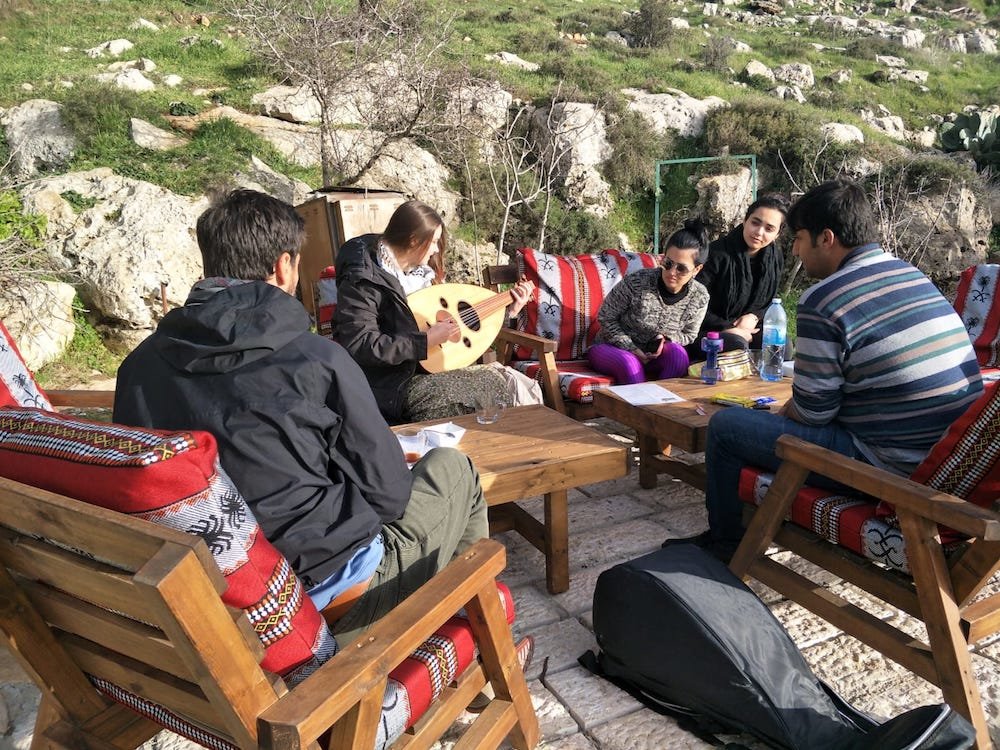Once you understand the type of position you’re interested, what qualifications you need, and whether or not teaching abroad is right for you, it’s time to jump into the process of finding the right job. Although it may seem daunting, the following steps will help you make sure you’re prepared for this possible new career.
1. Decide Whether to Apply through a Program, Recruiter, or Independently
Once you’ve made sure that you’re prepared, you’ll need to think about whether you would like to find a job on your own, or partner with a larger organization. Prestigious volunteer programs like Fulbright and the Peace Corps can be advantageous as they will guide your placement, expenses, living situation, and provide any support that you may need.
Other volunteer organizations can provide the same (usually for an upfront fee), such as Volunteer Solutions, who offers placements in 26 different countries, and iSpiice, who offers placements in India that combine education and social programs.
If you decide that you would like to find a job on your own, know that you may not have the same support in place as with more official organizations or recruiters. Because of this, you should be prepared to have enough savings if any emergency arises, and the ability to secure your own housing, insurance, and cover flight costs. However, many international schools will provide assistance in these areas.
Take a look at the job openings on the school websites of the places you’re interested in, and you should find a list of benefits as well as their application requirements. You can always find available teaching abroad job postings on the Go Overseas Teaching Job Board, as well.

2. Choose a Country to Teach In
Choosing the country you want to teach in may be the most fun part of the process!
You might be dreaming of exploring Kenya after your spending your week your adorable Kindergarteners, or learning to speak Chinese while you teach your students English in China, or sharing stories with your fellow teachers over a glass of wine in France. You could travel to the United Arab Emirates and make a very high salary at a private school based on your teaching experience, or apply for a teaching job on a military base in Italy. Your decision may be based on the salary and cost of living in a particular country, especially if you have current debt, or simply on the language and culture you would like to immerse yourself in.
Once you’ve decided on the type of teaching job you’re looking for, you can start thinking about the right country for you while checking available job postings. Allowing yourself to remain open to many possibilities will increase your chances of success. You may not find a job in the first country on your list, but the one you find could be better than you could have ever imagined!
3. Prepare Your Resume/CV
Writing a resume can be a daunting task for anyone — particular if you’re applying overseas. The first step is to know the format that is expected. In North America, standard resumes are used, whereas in Europe, CVs are used. In Australia, they use both.
The main difference between these formats is the length and detail — resumes are very concise documents with an abbreviated education and employment history (usually only bullet points are used). CVs, on the other hand, can be multiple pages long, and go into great detail about your prior education, employment, skills, and achievements. If you’re unsure which format to use, contact the organization you’re applying to and ask them which they prefer.
No matter the format, here are some universal tips for writing a Resume/CV for teaching:
- Be sure you check for grammar and spelling mistakes
- Use a professional format – most word processing programs will provide a template for free, or you can purchase a template online on sites like Etsy
- Be sure your resume/CV is easy to read and easy to follow
- Check with your references to make sure you have the most updated contact information — you might even want to ask them to write a letter of recommendation to make your application even stronger
- Relate your Resume/CV to the specific job you’re applying for: highlight the work experience, awards, and skills that relate to the specific job description you’re responding to, and make sure your accomplishments stand out
- Include a professional photo of yourself (many job postings will ask for this), however, avoid using too many other graphics as they may be distracting and may not format correctly once sent to potential employers

4. Apply for Teaching Jobs
Once you’ve browsed any potential school websites and taken a look at current job postings, it’s time to begin the process of applying. Even if a school doesn’t seem to have any openings, you can always reach out to them to see if there are any vacancies and to ask if you can send them your resume just in case they have any future openings. You never know!
Applying for multiple positions that you’re qualified for will increase your chances of finding a job. Aneesa stresses the importance, however, of only accepting interviews from schools that meet the criteria you are looking for and being clear about your salary expectations. Be sure to follow up on your applications, and don’t be discouraged if you don’t find anything right away. As with any job search, it may take time and patience. In the meantime, you can always make your application stronger through the right certifications, gaining experience, and obtaining more training and skills related to education.
Aneesa also says that at times, you may not be chosen for the grade or level you want and are qualified for. “Sometimes,” she says, “it’s about filling a need where there is a vacancy at a school so you may be challenged and have to learn new things.” Being flexible and open-minded will lead to greater success during the application process, and during your teaching placement.
5. Ace the Interview
Once you land an interview, you’ll want to do some pre-interview prep to ensure that you nail it. Start by thoroughly researching the school and the position you applied for. Showing up with some knowledge about the place that’s interviewing you shows you’re taking the opportunity seriously.
On that note, when your interviewer asks if you have any questions at the end of the interview, your answer should never be “no.” Come ready with a list of questions about the position. Some questions that will help you better understand the position while also demonstrating your interest and commitment include:
- When you think about your most successful teachers, what qualities helped them succeed in this position?
- What is the most challenging aspect of this job, and do you think I’d be in a position to confront that challenge?
- How do you measure performance in this role, and how often is performance assessed?
- What opportunities are there for continuing education, training, and growth in this position?
- What are your school’s the top values and priorities?
Finally, when answering the interviewer’s questions, try to refer to specific accomplishments and results as much as possible, and focus on experience over your studies. While your degree is important, they can see what you studied on your resume. Interviewers want to hear what you’ve done. If you just graduated, you can talk about student teaching experience, internships, jobs you had while in school, or even specific class projects or extracurricular activities.

6. Negotiate Your Salary & Contract
While you’re researching potential employers, make sure to look into salary information for similar positions or even previous employees at that school. That way, if you’re offered a position, you’ll know exactly what salary to look for and how much you can negotiate.
It’s worth it to practice negotiating salary with each job offer. Don’t be afraid that negotiating or asking for a higher salary than what’s offered will lead them to retract your offer. The worst that can happen is they’ll say no, and you can still accept their original offer.
Glassdoor is a great website for researching salaries and employee reviews, and they also have some excellent salary negotiation tips. They recommend being clear that you’re excited about the offer and want to accept, but are looking for a higher salary. Use your research and experience to back up your negotiation: for example, reference the average salary for a teaching job in that country, or explain that you have three years of experience and the position only requires two. According to Glassdoor, you should also wait as long as possible to begin discussing salary. The more time they’ve invested in your interview process, the more committed they are to hiring you.
Finally, make sure to take into account more than just the number they offer you, as benefits are valuable as well, and teaching hours vary by position. Make sure you fully understand your teaching contract before signing and try negotiating any terms that aren’t what you were hoping for.
7. Accept Your New Teaching Job
Keep in mind that things like pay, working conditions, and job requirements can vary greatly by country. The following job terms should be completely clear:
- Pay and benefits
- Hours and working conditions
- Subject and ages you’ll be teaching
- Whether accommodations or housing assistance is included (if not, know how you’re going to find a place to live and how much it will cost)
- How to get a visa and what the conditions of your visa will be
Once you’ve figured out logistics, it’s time to look inside and ask yourself whether or not you truly feel good about this employer and opportunity, whether it will help you get to where you want to be in life, and conversely, whether you can truly serve the school and its students. If you’ve received the offer of your dreams and decided it’s a good fit, congratulations! It’s time to accept your new teaching job abroad.

8. Prepare Financially Before You Depart
Unlike finding a job in your own country, there can be a very high relocation cost that comes with teaching overseas. For a volunteer position, you’ll need to be able to cover all of your expenses, including flights, housing, food, program fees, insurance, and activity fees. For any job overseas, you should have an emergency fund, as well.
Volunteer organizations like the Peace Corps and Fulbright will cover these expenses, but any outstanding debt or financial commitments must be paid by you. You might be able to find a public or private school, as well as a military placement, that covers all upfront costs or will provide a housing stipend. Sometimes, these benefits are given as reimbursements, so you must still be able to cover the initial cost.
It’s also important to research the cost of living in the country you’re applying to and compare that with your expected salary before accepting a job. A modest apartment in Chile costs an average of $670 per month, while the same size apartment in Hong Kong can cost an average of $3,000 per month! Taking time to research the cost of housing, food, and other goods and services before you start a new job will ensure that you’re prepared in case your salary isn’t enough. Also keep in mind other expenses, such as traveling around the area or taking trips back to your home country.
Teaching overseas can be a dream come true, but it’s important that you look for a job for the right reasons. As Lena states, “Teaching young people is a profound responsibility that requires dedication, patience, and intent. You must care about this work, and you must be invested in those you serve. A young person’s access to quality education should not be compromised for the sake of someone else’s ‘cool’ experience.” Preparing yourself for this experience through training and research can help you gain the right mindset for teaching abroad.
Teaching abroad requires, above all else, a passion for your students and the desire to create change. If you share that passion and possess the right qualifications to work with students abroad, there are so many opportunities available for you. All it takes is a little flexibility, openness, and determination — and you can absolutely find the right teaching job for you.
